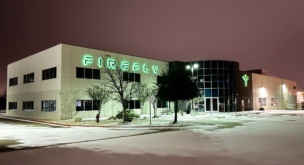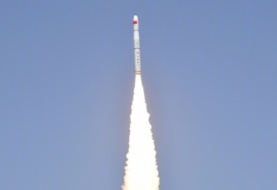The rise of reusable rockets launching from the world’s busiest spaceport has led to an inconspicuous side effect on Earth: a traffic jam at Port Canaveral.
There’s been a lot of talk about growing congestion on the launch pads as more and more companies seek to start their journey to space from Florida’s coast. But the port is also getting increasingly crowded as space companies park their vessels alongside cruise ships for prolonged periods to retrieve rocket stages, fairings, and boosters from the ocean after launches.
“With the space guys we always say come in, do your business, and leave,” John Murray, the Canaveral Port Authority CEO, said last week at the National Space Club’s meeting. “But if you bring all your stuff to the port and tie it up and wait for your next launch for six months, we don’t have the space to handle that.”
New era, new problem: The port has long played a role in space launch, with many companies bringing their rockets to Cape Canaveral via cargo ship. But reusable rockets have increased that traffic, adding a fleet of ships designed for at-sea recovery operations, including autonomous drone ships, tug boats and dedicated mobile harbor cranes.
A dozen space-related vessels are currently parked at the port, including ones belonging to SpaceX, Blue Origin, and ULA.
- SpaceX, which has leased on-port facilities since 2015 and has eight vessels in its maritime fleet, recovered 69 boosters and 165 fairings last year alone, according to a statement released by Port Canaveral.
- Blue Origin arrived in 2022, bringing two vessels with it and investing in specialized cranes and proprietary equipment for its New Glenn recovery operations, the statement read.
- ULA delivers its AL-built rockets to the Cape via a cargo ship, dubbed RocketShip, that traverses the Mississippi River and the Gulf to reach the launch pad.
More to come: At least 10 more undisclosed companies are also planning to occupy space at the port this year, according to Florida Today. “If everyone comes who says they’re coming, we’re going to have a problem,” Murray said.
The SpaceX factor: Whenever Starship begins flying from Florida, it could help alleviate some of the traffic buildup with its terrestrial “chopstick” landing that won’t require any real estate at the port.




